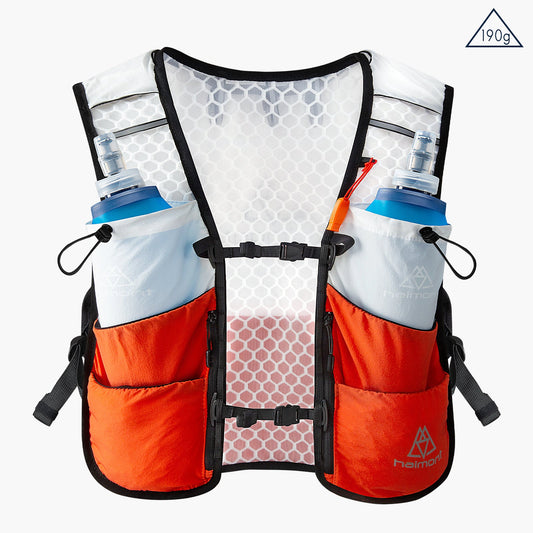10 Tips For Trail Running Beginners
Trail running is all about running on trails instead of paved roads or concrete urban paths. But it’s so much more than that.
At its essence, trail running is a fitness activity, a means for modern-day exploration and self-discovery and a way of life. Much more than just putting one foot in front of the other on a dirt or rocky trail, trail running has a culture, community, vernacular, vibe and cast of unique characters unto itself.
Trail running is about leaving the stress of everyday life for a 30-minute getaway on a local trail and also about pushing your physical limits and running longer than you ever have in your life.

1. No two trails are alike.
Every run on a trail is an entirely unique experience because every single trail is different. While some trails are flat, dirt paths that gently wind through a park, most are rolling routes with a variety of unique obstacles and features, such as roots, rocks, gravel, stream crossings, steep climbs and fast descents.
2. No two trail runs are alike.
Because every trail is different, every run on trails—even the same trail—is a unique experience. Throw in amazing views, wildflower meadows, waterfalls, always changing weather and the chance of seeing wildlife and you start to understand some of the reasons why trail running has been one of the fastest-growing sports of the 21st century.
3. Gear up and go.
While you can run a lot of trails in the same running shoes you wear on the roads or in your last marathon, buying a good pair of trail running shoes is a wise investment. Trail-running shoes are made for running off-road on natural surfaces and are equipped with trail-specific features to optimize your experiences, including protective toe bumpers, reinforced sidewalls and rock plates and sticky-rubber outsole lugs for added traction. A wide variety of other accessories—for example, an appropriate hydration pack, trekking poles, waterproof jacket and arm sleeves—are other key pieces of gear you’ll want to consider when trail running.
4. Find a trail.
There are trails everywhere. There are great routes to run in the mountains, through forest and along coastlines, but there are also a lot of options in and around most cities and suburbs, too. Not sure where to run? Visit your local running store or outdoor shop and ask for details. Or visit Trail Run Project, RunGo, MapMyRun, AllTrails, Roots Rated or ViewRanger on your phone or computer.
5. Safety first.
Because of the many unique variables you can encounter when trail running—winding, undulating trails, ever-changing weather, variable terrain and sparsely populated routes—it makes sense to take a few precautionary steps to ensure your safety. Knowing the details of the route you’re running, carrying a map with you, telling someone where you are running and even bringing a small first-aid kit are all moves that will pay off if you get into harm’s way.
6. Start slow and let it flow.
Unlike road running, the pace you run on trails is often entirely dependent on the terrain. Because most trails aren’t often flat or straight, how fast or slow you run will be relative to the amount of effort it takes to run uphill, downhill, over obstacles or around turns. Don’t focus on a per-mile pace, but instead focus on running by feel or running with a consistent effort.
7. Long may you run.
How far you run on trails depends on a lot of factors—your fitness, your gear, the weather and your expectations. Generally, running an hour on trails is much different and often much more difficult than running an hour on roads or bike paths in a metropolitan area and therefore you won’t run the same mileage or pace. If you can typically run 6 to 9 miles in an hour on the roads, don’t be surprised if you only run 3 to 5 miles per hour on trails. If you plan to run longer than an hour or for multiple hours, make sure you understand the limits of your own fitness and the gear you should take and safety protocols you should follow.
8. Challenge yourself.
Trail running takes you outside, and allows you to strike out into new territory. Trail running is a well-rounded form of exercise, building aerobic fitness, muscle strength and endurance. When we trail run, we often find ourselves stepping out of our comfort zone, whether we are taking our first steps in a new activity or running a 100-mile race. That challenge is a form of personal growth, providing a sense of fulfillment and satisfaction.
9. Enter a race.
Do you want to improve your trail running? Having a goal like a trail race can help make that happen. Do you want to explore new places? Signing up for a race in a place you’ve never been—locally, regionally or internationally—is a great way to do that. Do you like to be competitive with yourself or against others? Running a short-distance race or an ultra-distance race will allow you to challenge yourself in ways you never thought possible.
10. Lose yourself.
Run along a trail, and you’ll find that the weight of the world slowly disappears from your shoulders. Trail running, with its ever-changing terrain, requires more concentration than other forms of running. That steady concentration is relaxing, perhaps not too different from










